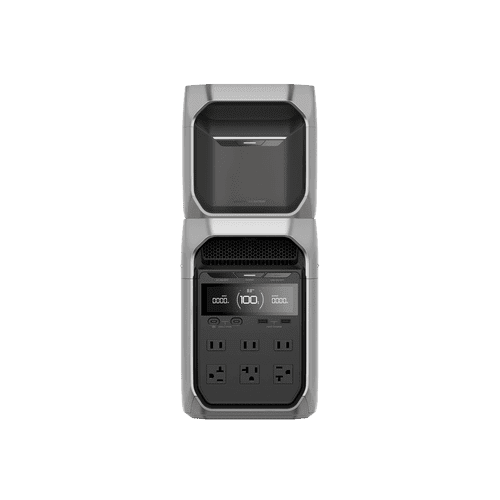
Picture this: you’re deep in the wilderness, your phone’s battery is critically low, and you desperately need GPS coordinates or emergency communication. In today’s tech-dependent outdoor adventures, reliable power isn’t just a luxury—it’s essential for safety and convenience. Yet finding the perfect balance between sufficient power capacity and practical portability has long challenged outdoor enthusiasts.
Enter power stations, revolutionary devices that are transforming how we approach off-grid energy needs. These compact powerhouses offer a solution that traditional options like noisy generators or limited-capacity battery packs simply can’t match. But with the market flooded with options, choosing the right power station requires careful consideration of several crucial factors.
How much capacity do you really need for your adventure style? What’s the sweet spot between power and portability? And how can you ensure reliable charging in unpredictable outdoor conditions? Let’s explore how to match the perfect power solution to your unique camping needs, ensuring you stay connected and powered up when it matters most.
Understanding Your Camping Power Requirements
Determining your camping power needs starts with a realistic assessment of your essential devices. A typical smartphone requires about 15-20 watt-hours per full charge, while LED camp lights might use 2-5 watt-hours per evening. Portable cookers can draw anywhere from 120-200 watt-hours for a single meal, making them one of the more power-hungry devices at camp.
The duration of your trip significantly impacts power planning. Weekend warriors might get by with 200-300 watt-hours total, sufficient for phone charging and lighting. Extended expeditions lasting a week or more demand careful power rationing and typically require 1000+ watt-hours, especially when supporting multiple campers.
Prioritize power allocation by categorizing devices into mission-critical and comfort items. Emergency communication devices, GPS units, and safety lights should always take precedence over speakers or laptop charging. Environmental factors like extreme temperatures can reduce battery efficiency by up to 30%, while high-altitude camping may affect some power stations’ performance. Build in a 20% power buffer for these variables to ensure you’re never caught short when it matters most.
Why Portable Power Stations Beat Traditional Solutions
Limitations of Alternatives
Traditional power solutions for camping have significant drawbacks that can detract from the outdoor experience. Gas generators, while powerful, create constant noise that disturbs both wildlife and fellow campers, often violating campground noise regulations. Their exhaust fumes pose health risks and environmental concerns, while fuel storage presents additional safety hazards. Many popular camping destinations now explicitly ban generators, making them an increasingly impractical choice.
Power Station Advantages
Modern portable power stations address these limitations while offering superior functionality. Their silent operation preserves the natural camping experience, and zero-emission technology means they’re welcome even in the strictest eco-conscious campgrounds. Leading manufacturers like EcoFlow have pioneered features that integrate multiple outlet types—from standard AC to USB-C—eliminating the need for separate adapters and converters. Most importantly, these stations offer scalable power solutions through expandable batteries or daisy-chaining capabilities, adapting to trips ranging from weekend getaways to extended wilderness expeditions.
The versatility of power stations extends beyond just camping. Their clean, reliable power makes them valuable for emergency preparedness at home, outdoor events, and mobile workstations. Unlike car batteries, which risk leaving you stranded if drained, power stations provide dedicated energy storage with built-in safety features. While solar-only setups can leave you vulnerable to weather changes, power stations combine solar compatibility with multiple charging options, ensuring consistent power availability regardless of conditions.
Key Features in a Camping-Ready Power Station
Capacity & Output Essentials
Understanding watt-hour ratings is crucial for real-world applications. A 500Wh power station can run a 50W camp light for 10 hours or charge multiple smartphones dozens of times. When selecting output options, ensure your power station offers diverse ports matching your devices—standard AC outlets for laptops and cameras, USB-C PD for fast-charging modern devices, and traditional USB-A ports for legacy gear. Pure sine wave inverters are non-negotiable for sensitive electronics like CPAP machines or photography equipment, preventing potential damage from power fluctuations.
Portability & Durability Factors
The sweet spot for weight-to-power ratio typically falls between 2-3 pounds per 100Wh of capacity. Look for units with IP65 or higher weatherproofing ratings to protect against rain and dust. Impact resistance should include drop testing from at least 3 feet height. Ergonomic handles with rubberized grips and balanced weight distribution make transportation significantly easier, especially when navigating rough terrain or carrying other gear simultaneously.
Recharging Flexibility
Solar compatibility should support at least 200W input for meaningful charging during daylight hours. Quality power stations can replenish 80% capacity from solar panels within 4-6 hours of good sunlight. Car charging through 12V outlets should maintain battery levels during transit, ideally providing 80-100W input. For pre-trip preparation, seek units offering wall charging speeds of at least 500W, enabling full recharge overnight. The best systems combine multiple charging methods simultaneously, maximizing power collection opportunities in unpredictable outdoor conditions.
Choosing Your Perfect Power Station: Decision Framework
Selecting the right power station begins with a simple device audit. A smartphone typically needs 15Wh per charge, a laptop around 60Wh, and camp lighting approximately 20Wh per evening. Multiply these figures by your usage frequency and trip duration, then add 30% buffer for unexpected needs. For weekend warriors carrying minimal gear, a 300-500Wh station provides ample power while maintaining reasonable portability. Extended trips or group camping demands 1000Wh or more capacity.
Weight considerations vary dramatically by camping style. Backpackers should limit power station weight to under 5 pounds, focusing on USB-only units that sacrifice AC output for portability. Car campers can comfortably manage units up to 15 pounds, allowing for more substantial capacity and output options. The sweet spot for most casual campers lies in the 7-10 pound range, offering sufficient power without becoming cumbersome during campsite setup.
When evaluating long-term value, consider expandability features that future-proof your investment. Look for stations with modular battery systems or daisy-chain capabilities, allowing capacity increases as your power needs grow. While premium stations command higher initial costs, their advanced charging technologies and robust build quality typically deliver better value over time through faster charging speeds, longer lifespan, and superior reliability in challenging conditions. Factor in warranty length and manufacturer support history as key indicators of long-term ownership satisfaction.
Powering Your Outdoor Adventures: Final Thoughts
The right power solution can transform your outdoor experience from anxiety about dead devices to confidence in staying connected when it matters most. By carefully matching your power station’s capacity to your adventure style—whether that’s weekend escapes or extended wilderness expeditions—you ensure reliable energy for both safety essentials and comfort devices.
Remember that a power station isn’t just about keeping phones charged; it’s about maintaining critical communication lifelines, powering emergency devices, and enhancing your overall outdoor experience. The latest generation of portable power stations, with their expandable capacities and efficient solar charging capabilities, represents a significant leap forward in outdoor power solutions.
As you embark on your search for the perfect power companion, prioritize systems that can grow with your adventures. Look for expandable batteries and robust solar charging capabilities—features that ensure your investment continues to meet your evolving needs. Take the first step toward power independence today, and transform how you experience the great outdoors.












